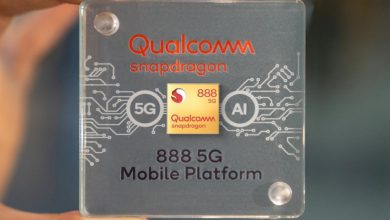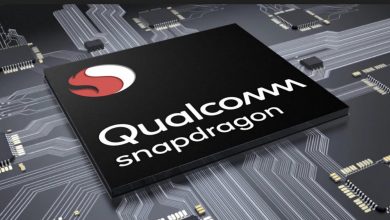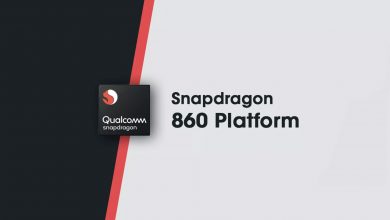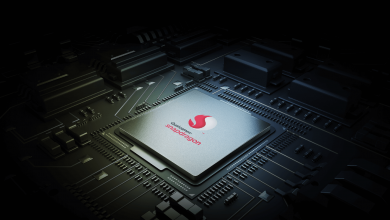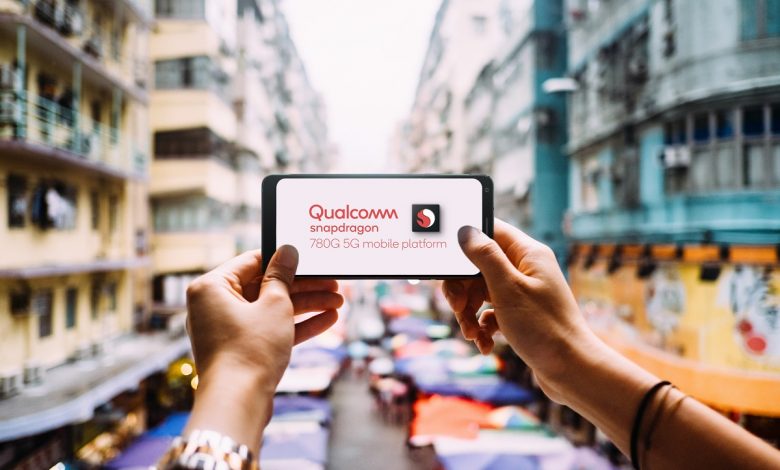
Qualcomm has revealed the latest chipset in its 7 Series, with the new Snapdragon 780G 5G Mobile Platform promising to cherry-pick some of the best tech from the more expensive Snapdragon 888 flagship. Expected to arrive in new Android phones sometime from Q2 2021, the Snapdragon 780G marks a number of “firsts” for the series, and looks likely to continue the trend of midrange devices to be arguably more exciting than their most expensive brethren.
While it’s easy to throw everything and the kitchen sink at a four-figure flagship phone, it’s a whole lot harder to make something truly compelling when you’re working to a stricter budget. As you might expect, then, Qualcomm has focused its attentions on camera tech, gaming performance, and 5G connectivity.
CPU and GPU:
Starting with the most important aspect, CPU, we are seeing some rather big changes here. While the Snapdragon 765G and 768G both used Kryo 475 cores, the Snapdragon 780G uses much more powerful Kryo 670 CPU cores clocked at up to 2.4GHz frequency. That’s paired with the Adreno 642 GPU with HDR playback, 10-bit Rec, 2020 HDR gaming, and support for OpenGL ES 3.2, OpenCL 2.0 FP, and Vulkan 1.1. The Hexagon 770 processor promises 12 TOPs of AI performance, more than double that of the Snapdragon 780G’s predecessor, and works alongside the 2nd-Gen Sensing Hub for the first time in a 7 Series chipset. That means an ultra-low power mode for sensors, Qualcomm says, offering features like background noise cancellation without a big hit on battery life.
Qualcomm says the new CPU architecture provides up to 40% performance uplift when compared to the previous generation. Qualcomm’s press material didn’t go into the nitty-gritty of core cluster and other details, but the chip is employing the combination of 4 ARM Cortex-A78 cores and 4 Cortex-A55 cores. The Snapdragon 780G is built on a 5nm process which should provide a minor efficiency boost over the previous 7nm EUV process.
The 780G also includes Qualcomm’s Snapdragon Elite Gaming Features suite, which offers various gaming enhancements such as Game Smoother, Fast Loader, Game Network Latency Manager, Jank Reducer, and so on. With increased GPU might, the chipset can now also handle displays with up to 144Hz refresh rate, enabling affordable gaming phones to push beyond the 120Hz ceiling.
Connectivity
On the connectivity side, meanwhile, it’s a measured compromise for that price/performance balance. The Snapdragon 780G uses Qualcomm’s Snapdragon X53 5G Model-RF System, which means Sub-6 GHz connectivity but no mmWave. Downlink speeds top out at a theoretical 3.3 GHz as a result.
Given the relative paucity of mmWave 5G networks still, that’s probably not a sacrifice most owners of 780G-based phones will be too upset about. The X53 modem still has support for standalone and non-standalone modes, FDD and TDD, Dynamic Spectrum Sharing, Sub-6 4×4 MIMO, and global 5G multi-SIM, which are far more likely to make a day-to-day difference in the speeds users see.
The same could be said about the FastConnect 6900 System, which powers the Snapdragon 780G’s WiFi 6E (802.11ax), Bluetooth 5.2, and – in a first for the Snapdragon 7 Series – Snapdragon Sound. That means up to 24-bit 96kHz music streaming, with lower latencies, along with 32kHz super-sideband voice support. The FastConnect 6900 system has only featured on chips like Snapdragon 888 and 865+. Qualcomm is now bringing it to the midrange 700 series chips.

Cameras:
Looking at the cameras, we have the Spectra 570 which uses triple 14-bit ISPs and can deal with up to 192-megapixel stills or up to three 25-megapixel sensors at 30 fps operating simultaneously. Or, you could have up to a 64-megapixel sensor and a 20-megapixel one, again at 20 fps, with Qualcomm promising no shutter lag. An 84-megapixel single camera could shoot at 30 fps in the same conditions.
The chip also comes with a new low-light photography architecture, which we are told brings drastic improvements to ultra-low light photography. Just like its predecessor, the Snapdragon 780G also supports 4K HDR, HDR10+, and HLG video capture.
There’s 4K HDR video capture, and 4K + 64MP photo capture, plus 720p @ 480 fps slow-motion. The Snapdragon 780G supports HDR10+, HDR10, and HLG, plus 4K HDR video with Portrait Mode. All the usual AI features packed into modern phone cameras are supported as well, including low-light, real-time object classification/segmentation/replacement, and multi-frame noise reduction.
AI
AI performance is also getting a serious boost. The Snapdragon 780G comes with the 6th gen Qualcomm AI Engine and a new Hexagon 770 processor capable of delivering up to 12 TOPS (trillions of operations) performance.
Meanwhile, the new 2nd gen Qualcomm Sensing Hub greatly reduces power consumption in voice calls while also enabling background noise cancellation for a better calling experience.
Other important features:
Quick Charge 4+ is supported, plus up to 16GB of LPDDR4 memory, USB Type-C 3.1, and up to FHD+ 144Hz on-device displays or 4K 60Hz external displays. The new Qualcomm 3D Sonic Max fingerprint sensor is supported too, plus the Qualcomm Aqstic smart speaker amplifier, Voice Assistant Accelerator, and the Aqstic audio codec.
Availability
Devices featuring the new Snapdragon 780G chipset are expected to hit the shelves in Q2 2021. In the backdrop of flagship prices reaching new heights and Qualcomm struggling to produce enough stock of Snapdragon 888 chips, the Snapdragon 780G could prove to be a good option for premium mid-range devices.

